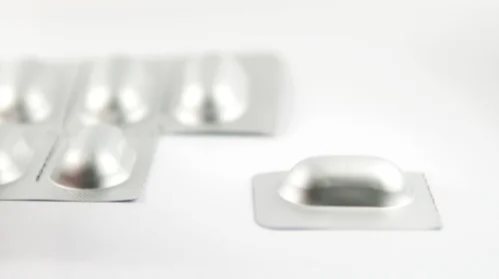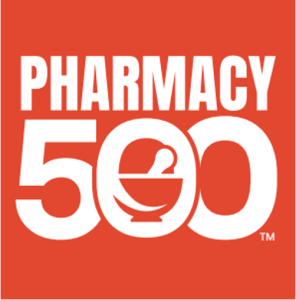Contributor: Julia West, PharmD, BCPS, MBA
Director of Inpatient Pharmacy, Greater Baltimore Medical Center
In today’s fast-paced world of new pharmaceutical products and evolving patient care needs, supply chain challenges, and medication shortages, the ability to balance the above components is often a key to survival for any pharmacy dispensing business or production environment. Inpatient, outpatient settings, and long-term care — all depend on safe and fiscally responsible medication management processes. Assurance of lean medication dispensing practices and waste reduction through targeted inventory turnover and avoidance of expired medications due to low use or over-order is equally important.
Utilization of medication repackaging techniques in both inpatient and outpatient settings provides one of the reasonable solutions to the above challenges. Not only does medication repacking allow for a cost-effective way to obtain and dispense medication, it also allows for additional dosage customization for oral solids, liquids, and injectables through the use of unit-dose and multi-dose containers. As noted in American Society of Health System Pharmacists (ASHP) Technical Assistance Bulletin, a single-unit package contains one discrete pharmaceutical dosage form (such as one tablet, one volume of liquid). A unit-dose package contains the particular dosage of the medication, ordered for a patient.1 Introduction of a multi-dose package to the market provides a solution to combine tablets or capsules in an organized blister pack or a pouch and, in addition to medication dose and strength, provides information with the day and time when this medication needs to be taken. Overall, such an approach to medication packaging presents an opportunity for enhanced patient safety, helps with adherence to the regimen as well as easy tracking of NDC (national drug code) in the event of medication recalls, to ensure compliance.
Medication repackaging, as a process, has the potential for significant cost savings, as many manufacturer-made unit dose packages are more expensive per single unit-dosed unit, as compared to the same dose dispensed from a bulk bottle. In addition, multi-dose packaging may provide cost savings on labor hours and consumables. Matching production volume and needs with a correct packing system is important. Selecting the correct package type, in alignment with the guidelines, is a part of decision-making process as well.
When selecting a unit-dose or multi-dose packaging system, one needs to be aware of packaging materials, shape, size, and form of available packaging, as well as federal labeling requirements. Packaging materials need to meet the requirements to protect the content. Packaging needs to meet physical characteristics that allow protection of the content from light, moisture, possibly temperature changes, air, and handling. Ideally, packaging should not be bulky; it needs to be inert towards the product. It should not absorb or adsorb any of the content or affect in any way the medication. If packaging is recyclable and bio-degradable, after use — this is a plus.1
Medication packaging systems provide a variety of packaging options and sizes within those options. When selecting a single-dose or a multi-dose packaging, having an idea of production volume, most frequently used medications, and their sizes or volumes is, once again, important. Selecting an improper size (i.e., packaging a small, 3 mm tablet in a single unit, designed to comfortably hold several 12 mm capsules) may create unnecessary storage space needs for the packaged inventory. The same is true with respect to multi-dose packaging, including packaging designed for direct shipping of packaged products to patients (for example, a pharmacy working with a long-term care facility setting). Incorrectly selected packaging sizes may result in the need for additional delivery charges or additional delivery truck space. Developing a close working relationship with the packaging vendor of choice is always a good step toward a lean production process, customization, and reduced waste. Durability — packaging should be able to withstand normal handling, should be easy to open, requiring no special training to use.1
Special considerations are worthy of note — blister packaging should have non-reflective backing, be easy to print on and to peel. A blister or a bubble needs to be of transparent material and ideally provide UV light protection, comparable to the original container. If used to package controlled substances, sequentially numbered packaging will help accountability. If utilizing pouches — one side of the packaging needs to be opaque and non-reflective. Proper sizing — large tablets in large pouches, small tablets in small pouches — to ensure the best fit for storage and delivery. Packaging needs to be easy to tear. When packaging liquids, the containers must be able to accommodate volume to deliver the labeled content. If utilizing a syringe-type container, it should be properly labeled “For Oral Use Only.”1
Medications repackaging must follow stringent guidelines. FDA provides guidance on mixing, diluting, and repackaging of biological products. Policies provided by the FDA are designed to ensure safety and reduce health risks to patients, due to medication repackaging. Within their guidelines, FDA includes definitions, such as what defines repackaging as “the act of taking a finished drug product from the container in which it was distributed by the original manufacturer and placing it into a different container without further manipulation of the drug.”4 Among other things, the FDA evaluates container closures, packaging systems, and the conditions under which the medication will be repackaged. As previously discussed, container or package design and quality can affect the stability of the drug.2,4 When selecting a unit-dose container, United States Pharmacopeia (USP) is a resource that contains minimum standards to be used as a guideline for drug repackaging. Not only does it provide the listings of requirements, it also specifies container class types. Beyond use dating as well as clear delineating of most current compounding practice also cannot be overlooked; staying on top of most current USP Chapters <795>, <797>, and <800> is important.3
In conclusion, unit-dose and multi-dose packaging provide great flexibility options for cost-effective, customized medication dispensing. When selecting unit-dose and multi-dose package options, the availability of different package sizes as well as a realistic assessment of production needs, are important. A close working relationship with a reputable vendor that follows FDA and USP-defined specifications and guidelines for their product cannot be underscored, as well as the facility’s knowledge of the most current guidelines — both align to provide the best care to patients.






